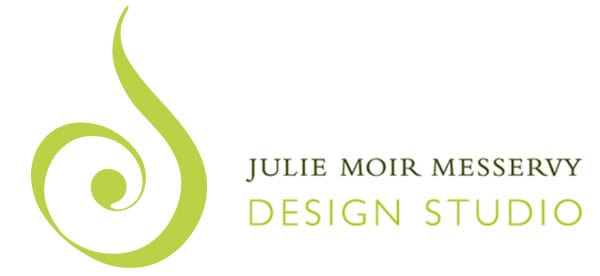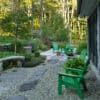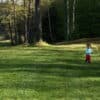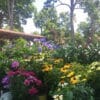
In response to my landscape design workshop at Vermont Academy, back in August 2008, I received several nice communications from one of the participants. Apparently, the workshop caused this thoughtful, life-long gardener to put some of her ideas down on paper:
Dear Julie Messervy,
My notions about gardening struck me, years ago, when seeing the pomp and ceremony of gardens in London. Such uniquely human emotions could be expressed with plants! So, my gardens, for these last 70 years, have been expressions of my pleasure and hope. In fact, I thought every gardener worked on that assumption.
Is this notion never mentioned in garden literature? Is it so obvious that no mention of it appears anywhere – or is it so esoteric, only professionals may use it? It’s useful guidance, for pity’s sake!
What is “art” if not a reflection or expression of human emotion?
Those flowerbeds of riotous colors, packed tightly to be wildly noisy and boastful, are like someone dominating a situation with drunken exaggeration, self-congratulation, and self-glorification. (Here I am reminded of a tour guide, in Tokyo, who informed us that its very over-crowded subways were responsible for the small breasts of Japanese women.) Nothing in over-crowded flowerbeds shows the nature of the plant itself.
And gardens that amount to patches of random beds along a path seem like looking through snapshots in a stranger’s photo album. To me they are vacuous.
For example, I planted a border of our pet cemetery with plants that I call ‘weepers’ – those which have drooping leaves – and the effect was perfect – of tears.
So of course, a yucca must go in a high place where it may express ‘Eureka!’ to the entire yard.
And so forth. It’s especially fun to match the nature of plants to the objects in a garden, like fountains birdbaths, etc.
I very much enjoyed the recent day with you at Vermont Academy. It was very well done. And look forward to more of them. Hopefully the next will be on lower ground, for I’m 90 and it felt like climbing a mountain! The descent reminded me of the news item in the NY Times of the lad who snowboarded down Mount Everest.

Sincerely,
Joan W.
I continue to get to know this gardener through letters and conversations, since she lives just down the street from our design studio. Here is my response. I encourage other readers to join the discussion:
Dear Joan,
What a treat to hear your thoughts about using plants as an expression of human emotion in the garden. Planting design is a difficult art form because there are so many possibilities to choose from, each individual with its own particular growth habits, cultural requirements, bloom periods, and seasonal change. Most people don’t know how to begin deciding where to place their trees, shrubs, perennials, annuals, or groundcovers, whether alone or in combination with others. I love your thoughts, not only because they mirror my own ideas discussed in The Inward Garden, but because you express them so eloquently!
I’ll never forget hearing Marco Polo Stufano, the eminent plantsman and former director of horticulture at Wave Hill in the Bronx, talk about his theory of planting design. He likened plants to actors on a stage that took a lead or a supporting role. He said in a Fine Gardening interview that “one of the most important parts of making a garden is to think about putting those shapes together in such a way that they end up in a pleasing picture…That’s even more important to me than color.”

(illustration by Bethany Gracia, from Home Outside: Creating the Landscape You Love, to be published January 2009 by the Taunton Press)
We’ll be taking up the issue of planting design in more detail in the coming year as we begin a sequel to our new book coming out in February 2009 called Home Outside: Creating the Landscape You Love. I’ll be over to talk with you in more detail about your ideas and hope that others will respond as well. Thank you for your wonderful letter!
Warm regards,
Julie





